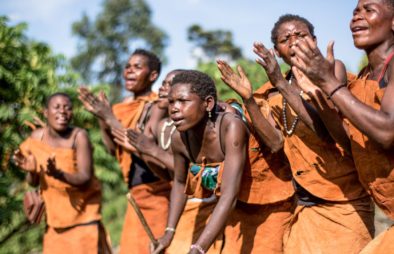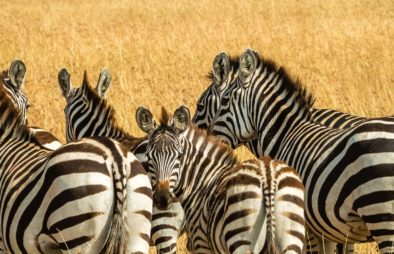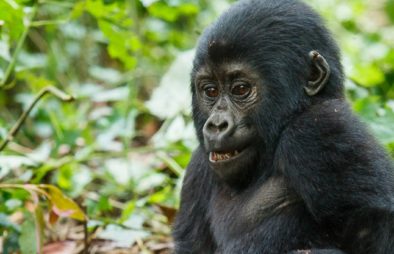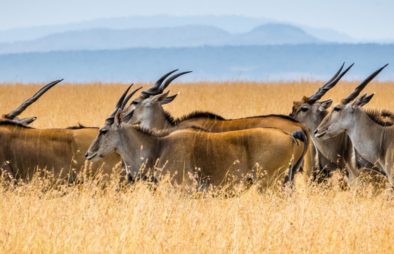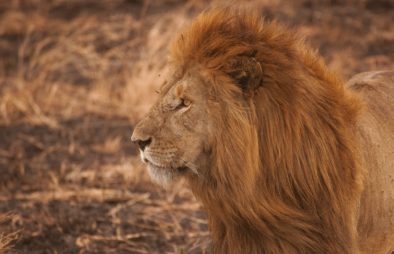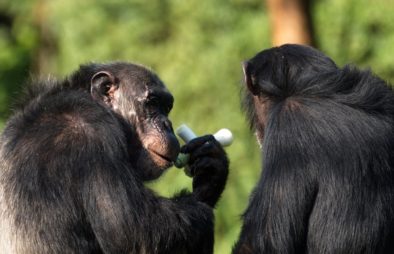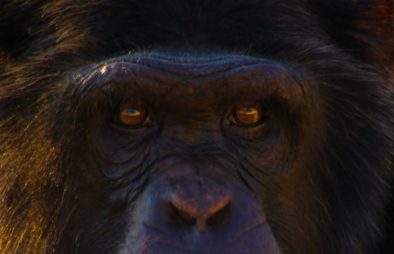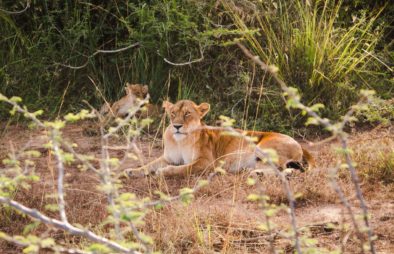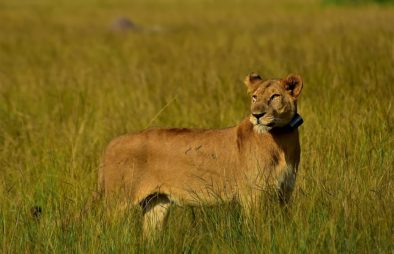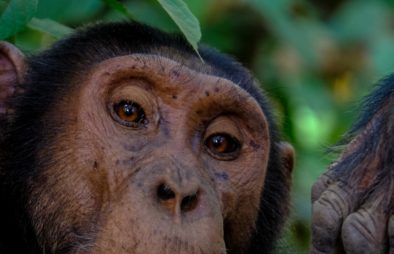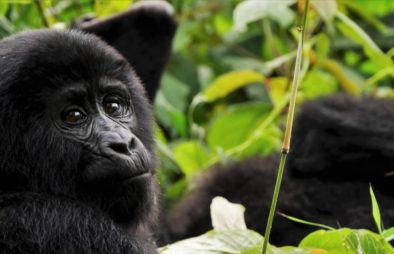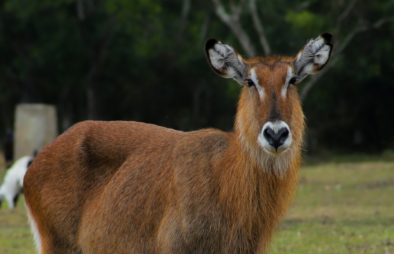Uganda Safari Tours & Gorilla Trekking Guide 2022/2023
Have a passion for primates? Escaping to the misty jungle in the continent of Africa is the only way to go.
Gorilla trekking is a lifetime activity, as your eyes are set right in front of the impenetrable vegetation, apes and a whole world of wonderful terrain, birds and vibrant cultures.
There are two gorilla species, only found in the continent of Africa; mountain Gorillas and eastern lowland gorillas.
These reportedly share about 98% of human-like DNA, feed on vegetation, are social creatures and only adapt to high altitude areas.
Cost of gorilla trekking in Uganda
The gorilla trekking cost is charged per person per day and without a valid trekking permit, no one accesses the gorillas.
In each of the destinations, only persons aged 15 years and above, of any nationality qualify to reunite with these rare creatures. Uganda charges 700 USD per foreign non-resident, 600 USD per foreign resident and 250,000 UGX per east African citizen and Ugandan citizen.
Rwanda charges 1500 USD, the highest in the whole world, while Democratic Republic of Congo charges 400 USD.
Porters charge about 20 USD to carry heavy luggage in case one needs support during the adventure.
Though the permit prices seem high, this caters for conservation fees, payment of the rangers and also giving back to the local communities living around the park.
Despite the cost, gorilla permits are scarce, thus the need to book at least three months in advance.
Is gorilla trekking safe?
Yes, trekking gorillas is very safe and interesting, though tiresome. The activity is done on foot and starts very early in the morning. The ranger guides brief about the trekking rules, assign members to the family of their choice and accompany the trekkers throughout the activity. Gorillas are shy yet so gentle and only charge at guests when feeling offended, a reason why you will have to follow their rhythm and all instructions by the ranger guide. The trekking time lasts for approximately 2-7 hours.
Where to go gorilla trekking in Africa?
The world has only five gorilla trekking destinations in the East and central region of Africa, namely; Virunga national park and Kahuzi-Biega national park in Democratic Republic of Congo; Volcanoes National Park in Rwanda, Bwindi impenetrable and Mgahinga Gorilla national parks in Uganda. But talking of where to have an excellent gorilla safari, Ugandan destinations are perfect.
Bwindi Impenetrable national park is home to the largest concentration of mountain gorillas of all destinations. This misty jungle is located in the far corner of southwestern part of Uganda - a 9/10 hours' drive with en-route stopover for lunch. Visitors track mountain gorillas in any of the four sectors in this national park; notably Ruhija, Nkuringo, Rushaga and Buhoma.
On the day of tracking, ranger guides assign visitors to some of the resident families; Mukiza group, Bitukura group, Kyaguliro and Oruzogo group in Ruhija sector; Habinyanja, Rushegura, Mubare and Katwe in Buhoma; Bushaho, Christmas and Nkuringo groups in Nkuringo sector; Kahungye, Nshongi, Rwigi, Mishaya, Mucunguzi, Kutu, Busingye and Bikingi in Rushaga region.
Best time for Gorilla trekking in Uganda & Rwanda
Gorilla trekking is best done in morning hours, when they have just woken up, are actively looking for what to eat and always playing. The ideal months for undertaking a tracking adventure are June to September and December to March, when there are no or fewer rains to interrupt the trek.
Budget trackers can pick the months of April to May or October to November, when there are fewer visitors while lodges and tour operators give discounts.
Gorilla trekking packing list
Depending on the duration of your trip; packing list should include a day pack, Poncho, insect repellant, a professional camera, Binoculars, bottled water, some snacks and gloves to protect your hands, hiking boots, long-sleeved shirts, long trousers and so much more.
Gorilla trekking is worth the price and time. Visit your cousins in the continent of Africa and have the best of each moment of your vacation.
Gorilla trekking in Bwindi Impenetrable National Park
The misty, verdant and densely forested Bwindi Impenetrable Park is the most outstandingly popular mountain gorilla trekking destination in the whole World. This ancient rainforest sprawls over a series of steep ridges within the south-western part of Uganda and extends for over 321 square kilometers. Exploring the World-famous Bwindi Impenetrable Forest is every visitor's once-in-a-lifetime opportunity, offering adventures that allow primate lovers to spend quality time with one of the habituated gorilla groups.
Conservationists estimated the number of these Giant Apes at only about 250 individuals in the 1980s but given the tremendous efforts of local and International wildlife Organizations as well as gorilla tourism has contributed to growth of these gentle beasts in their natural habitat.
Gorilla Families/Groups in Bwindi Impenetrable Forest
Within the thick forest and misty slopes of Bwindi Impenetrable Forest is where the 18 fully habituated gorilla families roam and are visited on a daily basis by over 144 visitors. All in all, this Impenetrable forest is haven to about half the World's surviving mountain gorillas and finding these Great Apes in the thick forest is no easy activity and treks last up to 6 hours or more. However, visitors who are able to endure with these long and physically demanding treks are rewarded with unforgettable experiences and meeting face to face with them in their natural habitat is undeniably the most breathtaking wildlife experience on Earth.
How gorilla trekking adventures are conducted in Bwindi Impenetrable Forest
Gorilla treks in Bwindi Impenetrable Forest are conducted daily from the Park Headquarters, kicking off at 7:00am with registration and briefing. Don't forget to carry along your passport and gorilla permit for the registration process and the briefing process will be supervised by the Ranger guide, lasting 30-45 minutes.
Gorilla treks are limited to groups of only eight visitors, and this limit is done to ensure the safety of mountain gorillas from any airborne pathogens (causing flue, cough and colds) and also, large groups are likely to scare away the already gentle and peaceful creatures. From the start, the dramatic mountainous and slopes hills of south-western Uganda (where Bwindi Impenetrable Forest is found) as well as the terraced volcanoes are evident of the intimidating challenge. One thing you need to remember is that the mountainous/slopes hills and dense forest is the territory of mountain gorillas hence hiking is required to maneuver through the dense vegetation, ascend muddy hills and descend into rugged valleys.
Additionally, the high elevation and rugged terrains make gorilla treks tiresome, yet rewarding and magical in the end. After hours of trekking, visitors make contact with the gorillas of which a silent whisper will be made deep in the forest as you get closer. When these creatures eventually show up, it is evidently an incredible experience to see them in their natural habitat with the lush forest offering an amazing backdrop.
Maintain low voices to avoid scaring the mountain gorillas and your whispers will be broken by the sounds of their movements as they play and roam around alongside calls and whoops of other forest residents especially birds and animals. Visitors have up to one hour to observe and take photos of the mountain gorillas and visitors who wish to spend longer time with these Great Apes can book the Gorilla Habituation Experience only offered in Bwindi Impenetrable Forest where they spend up to four hours in their presence.
When to undertake the sensational gorilla treks in Bwindi Impenetrable Forest
The Sensational gorilla treks of Bwindi Impenetrable Forest can be undertaken all year round, much as the rainy season-March to May and October to November make treks more challenging. However, there are also advantages of trekking during this season but expect tougher treks resulting from heavy downpours. It is for this reason that most trekkers prefer the dry season from June to September and December to February.
Cost of Gorilla trekking permits for Bwindi Impenetrable Forest
All gorilla treks in Bwindi Impenetrable Forest require acquiring gorilla permits from Uganda Wildlife Authority and presently cost only $700 per person for the foreign non-resident tourists, $600 for foreign resident visitors and only about Shs. 250,000 for the East African Community visitors (at the time of writing) although permits are sometimes discounted.
What you need to pack for gorilla trekking in Bwindi Impenetrable Forest
Bwindi Impenetrable Forest is generally densely forested, misty as well as hilly, and therefore you need to pack things that will keep you comfortable during treks. These items include long-sleeved shirts and long pants to protect your legs and arms from being scratched, well-fitting and sturdy hiking boots with enough ankle support, wide brim hat, camera to capture the precious moments during gorilla treks, pair of binoculars to see small and far creatures in the forest, cotton socks, waterproof backpack to store items needed during gorilla treks, water bottle, sunglasses, energy giving snacks, rain jacket because you can't predict when it will rain, thick sweater to provide warmth during cold mornings and evenings, and so much more.
Where to stay during your gorilla trekking tours in Bwindi Impenetrable Forest
Just as Bwindi Impenetrable Forest is the most sought-after tourist destination for primate treks in Uganda, it also offers a wide range of wonderful accommodation options ranging from budget to luxury. Some of these popular places include Volcanoes Bwindi Lodge, Mahogany Springs, Gorilla Safari Lodge, Bakiga Lodge, Clouds Mountain Gorilla Lodge, Sanctuary Gorilla Forest Camp, Ruhija Safari Lodge, Buhoma Community Rest Camp, Buhoma Lodge, Nkuringo safari Lodge and many others. These accommodation facilities represent a small sample of the numerous places to stay and remember that the gorilla trekking sector will determine what places to stay.
How to get to Bwindi Impenetrable Forest
The beautiful Bwindi Impenetrable Forest is situated within the southwestern side of the country and involves about 8-10 hours of traveling along smooth tarred as well as murram roads to get there. Another option of getting to this Park is scheduled or chartered flight from Entebbe International Airport to Kihihi Airstrip (Ruhija and Buhoma trekking sectors) then connect to the place of stay by road or Kisoro Airstrip (for the southern Nkuringo and Rushaga trekking sectors). It takes about 1-2 hours to drive to the sectors and places of stay.
Gorilla trekking in Mgahinga Gorilla National Park
Mgahinga Gorilla National Park is a 34-square kilometer Protected Area established in 1991 and one of the four Mountain Gorilla Trekking destinations in the whole World. This Park is based within the south-western side of Uganda and is part of the vast Virunga Conservation Area (that also includes Volcanoes National Park in north-western Rwanda and the remarkable Virunga National Park in the Eastern side of Democratic Republic of Congo). It is the smallest in the country and also among the three Protected Areas in the Virunga Massif with only about 80 mountain gorillas.
This tinny Protected Area is haven to only one habituated gorilla family (named Nyakagezi), although it once sheltered Rwanda's Hirwa gorilla group that migrated in 2019 and later returned back to its original home after temporarily settling in.
How Gorilla Trekking in Mgahinga is conducted
Treks in Mgahinga Gorilla National Park usually start in the morning with registration and briefing at Ntebeko Visitor Center, on the expectations as well as guidelines to be followed during these treks. After this pre-trekking process, visitors are placed in groups of 8 persons, and this is done based on trekkers' level of physical fitness, age and personal interests. Treks eventually begin through the dense jungle with armed Ranger and expert guide who keep providing information on the Park, encountered attractions and mountain gorillas in addition to answering all visitors' questions.
Locating the mountain gorillas within Mgahinga Gorilla National Park lasts half an hour to 6 hours, depending on the movement of the Giant Apes, given the fact that they are always mobile and moving from one place to another to find food. On finding them, visitors can spend one hour with the Great Apes in their natural environment and during this magical one hour learn about their daily routines-feeding, playing, resting, grooming under the watchful eye of the silverback. This is the opportunity to take as many photos as possible and record videos of the experience.
About The Nyakagezi Gorilla Family
Nyakagezi Gorilla Family derived its name from Nyakagezi area where they were once sighted and is presently made up of 10 members. These members include 5 silverbacks (Bugingo, Mark, Ndugutse, Mafia and Mark), 2 adult females (Nyiramwiza and Nshuti) and 3 infants that include Fred, Mutagamba and Nshuti's baby. Many travellers believe that it is easy-to-trek this gorilla group because its members prefer ranging within a small area.
Cost of Mgahinga Gorilla Permits
Mgahinga Gorilla Permits are issued by Uganda Wildlife Authority to persons above 15 years, and cost $700 for foreign non-citizens, $600 for foreign citizens and Uganda Shillings 250,000 for East African Community Citizens. Given that there is only one habituated gorilla group, only 8 gorilla permits are available each day for this Park.
How Mgahinga Gorilla Permits can be booked
Mgahinga Gorilla Permits are only issued by Uganda Wildlife Authority although can be purchased directly through the Authority by sending an email, telephone contact or physically reaching their Head Offices Kira Road (Kampala) or indirectly through credible Tour Operators scattered across the country. The second option is easier and hustle-free with option of even booking other aspects of the gorilla safari such as accommodation, transport and meals. It is important to contact the Company or UWA at least months in advance for availability to be checked so as to match your intended trekking dates and availability of permits before finally making a deposit. After your deposit has been sent, you will be requested to send scanned copied of your passport to be used in booking the permit. Your permit will be booked after a scanned copy of the receipt is received.
Best time for gorilla trekking in Mgahinga
Gorilla treks in the small and beautiful Mgahinga Gorilla National Park takes place all year round although best memories are achieved during the dry season in months of January, February, June, July, August, September and December when little or no rains are experienced in the Park. With little or no rains experienced, hiking trails and Park roads/paths are not muddy/slippery hence more passable. Majority of gorilla trekkers also prefer the dry season because vegetation of the Park is also scarcer. When it comes to best time to book for gorilla permits, make sure that you do it between 3 and 4 months because of the high demand for gorilla permits and gorilla trekking in general.
Where to stay when trekking Mgahinga Gorillas
A number of accommodation options exist within or near Mgahinga Gorilla National Park for visiting interested in trekking Nyakagezi Gorilla Group and they range from budget to luxury. These include Mount Muhabura Climber Resort, Mgahinga Community Camp, Amajambere Iwacu camp, Mount Gahinga Safari Lodge, Virunga Hotel, Travellers Rest House and many others.
What to carry/pack for Gorilla Trekking in Mgahinga
Travelers planning gorilla trekking adventures in Mgahinga Gorilla National Park are advised to pack lightweight safari pants, waterproof backpack, rain jacket, insect repellant, hiking boots, breathable long-sleeved shirts, cotton socks, gardening gloves, energy-giving snacks and enough drinking water.
How to get to Mgahinga Gorilla National Park for gorilla trekking safaris
Mgahinga Gorilla National Park in south-western Uganda can be accessed by air and road transport. For air, scheduled and chartered flights can be arranged from Entebbe International Airport to Kisoro Airstrip then connect to the Park by a one-hour road transfer.
Travellers can also access the Park by road from Kampala or Entebbe via en-route Towns of Masaka, Mbarara, Kabale and Kisoro and finally to Ntebeko Visitor Center or the booked accommodation facility and this lasts between 8 and 9 hours.
General information about gorillas
Species of Gorillas in Uganda & Rwanda
The sub-species of Eastern Gorillas are Eastern lowland gorillas (Gorilla beringei graueri) and mountain gorillas (Gorilla beringei beringei) while the sub-species of western gorillas are western lowland gorillas (Gorilla gorilla gorilla) as well as the Cross River Gorillas (also referred as Gorilla gorilla diehli).
Size and physical characteristics of Gorillas
Gorillas have stocky bodies, wide chests and shoulders, dark fur, large and strong human-like hands, hairless faces and small eyes, heights ranging from 1.25 to 1.8 meters and weigh from 100 to 270 kilograms. Depending on the species and sex of the gorillas, their arms extend up to 2.6 meters. The World Wildlife Foundation (WWF) recognized that gorillas are the largest primates in the whole World. A mature male gorilla is five to ten times stronger than an average human and are said to possess the strength to tear down banana plants.
Gorilla Habitats
Gorilla Habitats depend on the species whereby the mountain gorillas live high in the densely forested mountains (2500 to 4000 meters above sea level) of Uganda, Rwanda and Democratic Republic of Congo while the Eastern lowland gorillas occupy the lowland montane and sub-montane forests as well as swamps of Eastern Democratic Republic of Congo between 650 and 4000 meters above sea level.
Gorilla Population and Distribution
There are said to be over 5000 Eastern lowland gorillas, approximately 1063 mountains gorillas.
Gorillas live in groups known as troops/or families, with 5-30 members although sometimes go as many as 50 members or as low as two members. A family is led by a dominant silverback although other members include subordinate silverbacks, adult females, blackbacks, juveniles and infants. Interestingly, each time of the day is set aside for different responsibilities with the mornings and evenings for feeding, afternoons for napping, grooming and playing while the nights are for settling in their nests made of twigs and leaves.
Gorilla Diet
Gorillas are generally herbivorous with their diet comprising of Bamboo shoots, pith, tree barks, roots, fruits, wild celery, tree pulp and leaves much as the western lowland gorillas are also said to enjoy eating small insects and invertebrates. A mature gorilla can consume up to 30 kilogram of vegetation each day and rarely drink water, given the succulence of their foods that contain almost half water in addition to morning dew. A typical gorilla day is divided into rest, travel and feeding periods.
Gorilla Gestation and Reproduction
The gestation period of gorillas is 8.5 months and they normally give birth to one offspring at a time although there are occasional cases of twins. A newborn gorilla weighs about 1.8 kilograms and when it is between 4 months and 3 years, it rides on the mother's back. From 7-10 years, the gorilla is old enough to move independently. A female gorilla can produce after every 4-6 years and give birth to 3-4 offsprings in a lifetime. It is this slow reproduction rate that makes them endangered and population low.
Gorilla Life span
The lifespan of Gorillas is about 35-40 years in the wild and about 50 years in captivity. The gorilla sub-species you will see in zoos or sanctuaries are the western lowland gorillas.
Gorilla Threats
Gorillas reproduce slowly, which makes their populations vulnerable and the fact that they are faced with a number of daily threats that include habitat encroachment and destruction, poaching/hunting and trade where they are killed for bush meat throughout West and Central Africa, susceptibility to diseases such as Ebola hemorrhagic fever, Tuberculosis and flue/cough, weak law enforcement and many other challenges.

